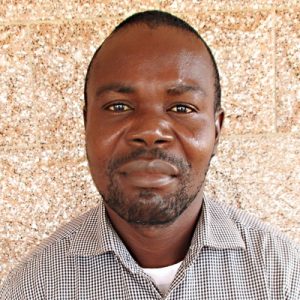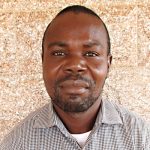The grounds of D.E.C. Mathen Primary School covers an area of about 6,150 square feet with a football field occupying most of the grounds. There is one building with seven classrooms and an office for the headteacher, and a store. There are also two buildings with three rooms each for toilets.
About 35 meters from the school building is a well in need of repair. It often runs dry and does not have the needed support to ensure it functions properly.
This is the well we are rehabilitating.
The 334 students at the school have to travel to the nearest swamp to collect water for each day. Its water also dissipates during the dry season, making an already unsafe water source unreliable for the school.
There are also the dangers associated with the road to the swamp water source. The road is bushy, putting the children at risk of being bitten by poisonous snakes. It also takes longer to fetch the water - costing students time that should be spent in the classroom learning.
The water itself is unsafe because it is used for a range of activities from washing clothes to bathing. That same water, filled with chemicals and other pollutants, is then used for drinking.
The latrines at the school are in great condition. All six are well kept. The floors are swept, dry, and all pits were covered. There were no cockroaches, flies or mosquitoes.
"It never looked like we were in a latrine of a rural school. It was actually unbelievable," said Thomas Lewis, reporting officer.
What we can do:
Training
There will be hygiene and sanitation training sessions offered for three days in a row.
The hygiene and sanitation trainer decided it would be best to teach students and the surrounding community about the importance of handwashing, building and using dish racks, and other sanitation facilities. Pictures will be used to teach the community how to discern between healthy and unhealthy hygiene and sanitation practices.
These trainings will also result in a water user committee that manages and maintains the new well. They will enforce proper behavior and report to us whenever they need our help solving a serious problem, like a pump breakdown.
Well Rehabilitation
We want to work on the well located at the school. Most of these wells were hand dug by local contractors who may not have the energy to dig further down to negotiate a reasonable depth, as a result, these wells get dry not long after their construction. So what we have been doing is converting these wells to boreholes so that reasonable water level can be reached which is the best alternative for communities. This is proving to be the best intervention rather than using the old way of doing a well rehabilitation.
Our team has decided to do the hard work of drilling a borehole by hand in the bottom of this well, which will not only increase the water quantity but will ensure its quality, too. A new well pad will keep contaminants out, and a new India MkII stainless steel pump will provide easy and safe access to the clean water inside.
The students have been drinking dirty swamp water and suffering the consequences. With our rehabilitating this open well, the students and the surrounding community will be provided with plenty of safe, clean drinking water.

 Protected Dug Well
Protected Dug Well
































